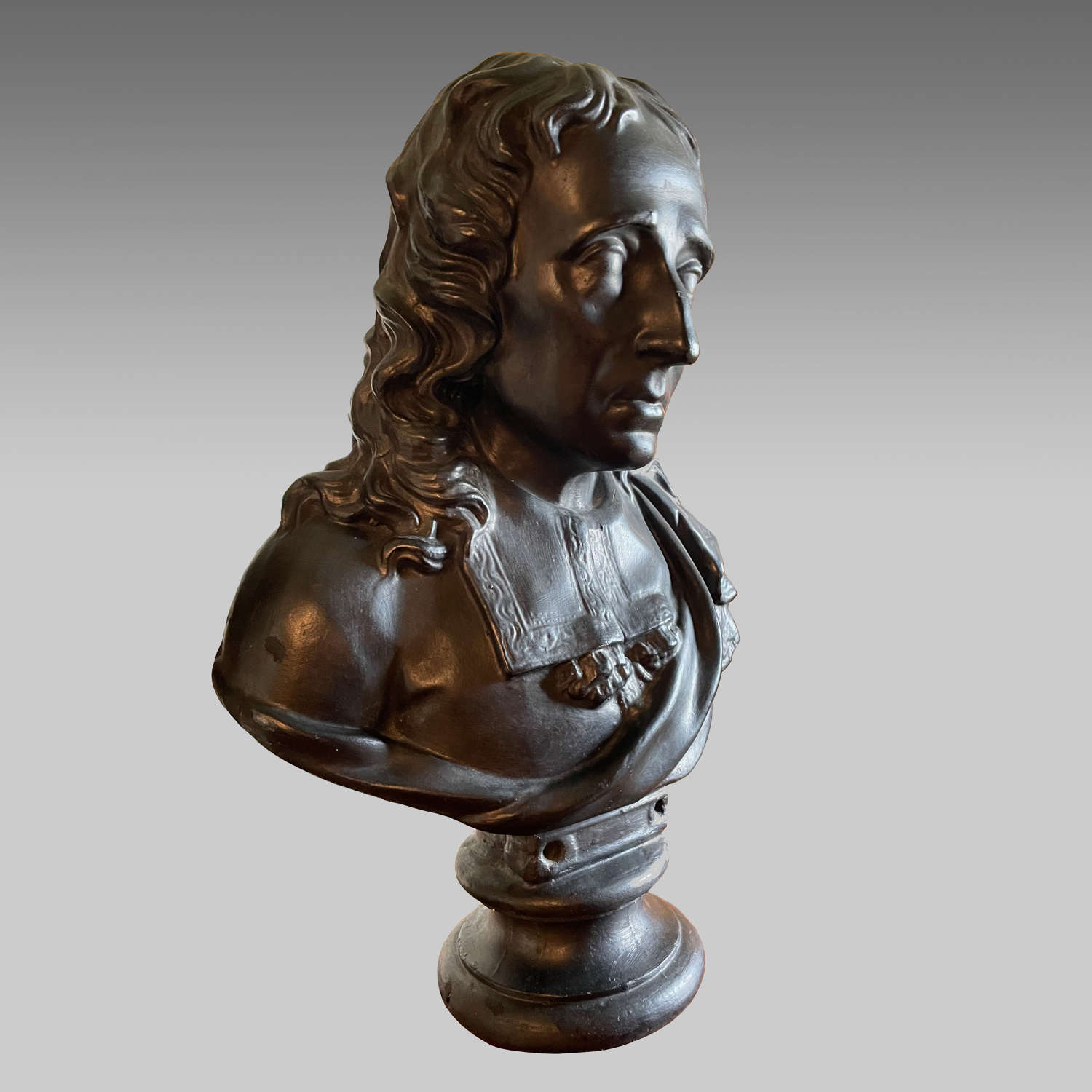


Code: 2471
Dimensions:
Library plaster portrait bust of John Milton, after a model by John Michael Rysbrack. Well cast plaster figure with original patination to simulate bronze, raised on a circular socle base. Stamped with the number 1856 to the reverse. It became the fashion from the 18th century to display lighter plaster copies of bronze original busts of famous luminaries, philosophers and political figures on the cornices of library bookcases.
English, 19th century.
Literature: John Milton (9 December 1608 – 8 November 1674) was an English poet, polemicist, and man of letters, and a civil servant for the Commonwealth of England under Oliver Cromwell. He wrote at a time of religious flux and political upheaval, and is best known for his epic poem Paradise Lost (1667), written in blank verse. Milton’s poetry and prose reflect deep personal convictions, a passion for freedom and self-determination, and the urgent issues and political turbulence of his day. Writing in English, Latin, Greek, and Italian, he achieved international renown within his lifetime, and his celebrated Areopagitica (1644)—written in condemnation of pre-publication censorship—is among history’s most influential and impassioned defences of free speech and freedom of the press. William Hayley’s 1796 biography called him the “greatest English author”, whilst William Blake considered Milton the major English poet and to this day he remains generally regarded “as one of the preeminent writers in the English language”.
Like the busts of Shakespeare and Locke, this portrait of Milton first appears in plaster at the Wren Library, Cambridge, in the 1750s, which, is attributed to the great John Cheere. There is a fine bronzed bust at West Wycombe Park, Buckinghamshire, and a later one signed by Sarti at Wimpole Hall, Cambridgeshire. The model was probably based on a famed marble bust by Rysbrack (1739, Westminster Abbey, or Stourhead, Wiltshire), or an engraving by Vertue. Evidently the present model remained popular for some time. At St Paul’s School, London, there is a good marble copy signed by Matthew Noble and dated 1866 and this example would have been a revival of those that preceded it.